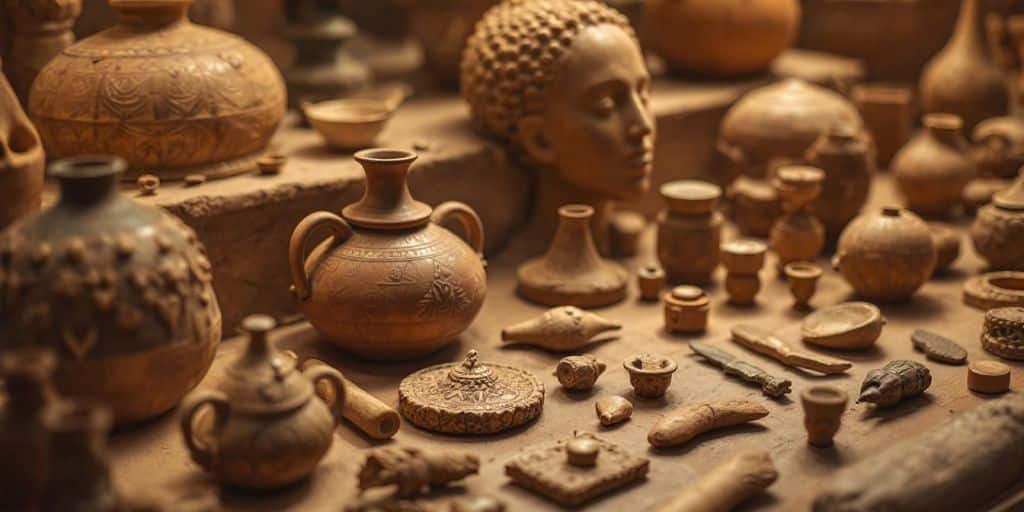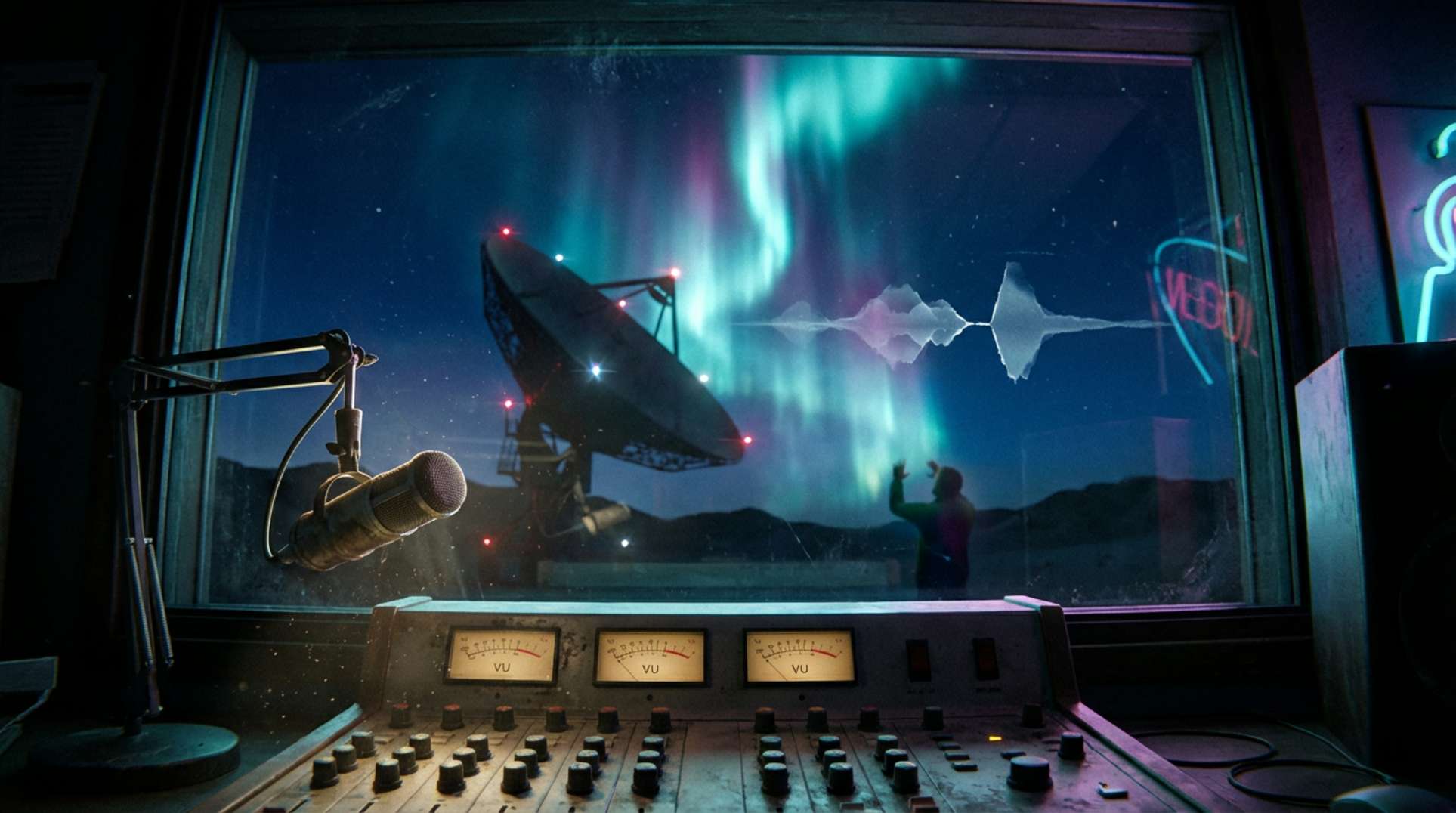Throughout history, many ancient artifacts have been discovered that challenge our understanding of past civilizations. These mysterious objects not only reveal advanced technologies but also provide insights into the cultures that created them. This article explores some of these intriguing artifacts and what they tell us about our history.
Key Takeaways
- The Osirion in Egypt suggests advanced engineering techniques that were previously unknown.
- The Wolfseg Iron raises questions about human and extraterrestrial involvement in ancient technology.
- The mysterious disappearance of the Anasazi civilization highlights the complexities of environmental changes.
- Myths like Atlantis may have roots in real events, showcasing how ancient societies understood their world.
- Oral traditions play a crucial role in preserving history, blending fact with storytelling.
The Enigmatic Osirion: Hydraulic Technology in Ancient Egypt
Discovery and Excavation
The Osirion, located in Abydos, Egypt, was discovered in the late 19th century. This ancient structure is believed to be linked to the god Osiris, and its excavation revealed a complex design that has puzzled historians. The intricate layout and construction techniques suggest advanced knowledge of engineering.
Advanced Hydraulic Systems
One of the most fascinating aspects of the Osirion is its advanced hydraulic systems. These systems were likely used to manage water flow, which was crucial for agriculture and daily life in ancient Egypt. Here are some key features:
- Water channels: Designed to direct water efficiently.
- Reservoirs: To store water for dry seasons.
- Pumping mechanisms: Indicating a sophisticated understanding of hydraulics.
| Feature | Description |
|---|---|
| Water Channels | Direct water flow |
| Reservoirs | Store water for irrigation |
| Pumping Mechanisms | Advanced hydraulic technology |
Architectural Significance
The architectural design of the Osirion is unique, showcasing a blend of functionality and artistry. Its massive stone blocks and intricate carvings reflect the skill of ancient Egyptian builders. The structure not only served a practical purpose but also held religious significance, symbolizing the connection between life and the afterlife.
The Osirion stands as a testament to the ingenuity of ancient Egyptians, challenging our understanding of their technological capabilities and architectural achievements.
In summary, the Osirion is more than just a burial site; it is a remarkable example of ancient engineering that continues to intrigue and inspire researchers today. Its hydraulic technology and architectural features challenge our understanding of ancient Egyptian civilization.
The Mystery of the Wolfseg Iron: An Ancient Enigma
Discovery and Analysis
The Wolfseg Iron is a fascinating artifact discovered in Germany. This piece of metal is believed to be over 250 million years old, which raises many questions about its origins. Unlike typical iron from that era, it shows signs of advanced metalworking. Researchers have conducted various tests to understand its composition and age, leading to debates about how such a sophisticated item could exist so long ago.
Debates Among Experts
Experts are divided on the implications of the Wolfseg Iron. Some argue that its unique properties suggest the possibility of ancient alien technology. Others believe it could be a natural formation or a result of geological processes. Here are some key points of contention:
- Age: How can it be so old yet so advanced?
- Composition: What does its material tell us about ancient metallurgy?
- Purpose: Was it a tool, a decorative item, or something else entirely?
Implications for History
The existence of the Wolfseg Iron challenges our understanding of ancient civilizations. If it is indeed a product of advanced technology, it could imply that ancient societies had knowledge and skills we have yet to fully comprehend. This artifact also raises questions about the possibility of lost civilizations that may have existed before recorded history.
The Wolfseg Iron serves as a reminder that our understanding of history is still evolving, and many mysteries remain to be uncovered.
| Feature | Description |
|---|---|
| Estimated Age | 250 million years |
| Material | Unique iron composition |
| Possible Origins | Advanced ancient technology or natural formation |
In conclusion, the Wolfseg Iron is not just a relic; it is a key that could unlock secrets about our past, urging us to rethink what we know about ancient civilizations and their capabilities.
Unveiling the Secrets of the Anasazi Disappearance

Historical Context
The Anasazi, also known as the Ancestral Puebloans, were a group of Native Americans who lived in the Southwest United States. They are famous for their impressive cliff dwellings and advanced agricultural techniques. However, around the late 1200s, they mysteriously disappeared from their settlements. This sudden disappearance raises many questions about their fate.
Archaeological Evidence
Archaeological studies have uncovered various artifacts and structures that provide clues about the Anasazi’s life. Some key findings include:
- Cliff dwellings that showcase their architectural skills.
- Pottery with intricate designs, indicating a rich cultural life.
- Irrigation systems that demonstrate their advanced farming techniques.
| Artifact Type | Description | Significance |
|---|---|---|
| Cliff Dwellings | Homes built into cliffs | Protection from enemies and weather |
| Pottery | Decorated with unique patterns | Cultural expression and trade |
| Irrigation Systems | Channels for water management | Enabled farming in arid regions |
Theories and Speculations
Several theories attempt to explain the Anasazi’s disappearance:
- Drought: A prolonged drought may have made farming impossible, forcing them to leave.
- Conflict: Increased warfare with neighboring tribes could have led to their decline.
- Resource Depletion: Overuse of resources might have made their environment unsustainable.
The Anasazi’s story reminds us that even advanced civilizations can face challenges that lead to their downfall. Their legacy continues to intrigue researchers and historians today.
Understanding the Anasazi’s disappearance not only sheds light on their culture but also challenges our views on how societies adapt to environmental changes and conflicts. Their achievements in architecture and agriculture remain a testament to human ingenuity, even in the face of adversity.
The Legend of Atlantis: Myth or Reality?

Origins of the Legend
The story of Atlantis first appeared in the works of the ancient Greek philosopher Plato. He described it as a powerful and advanced civilization that existed around 9,000 years before his time. Many believe this tale is a mix of fact and fiction, possibly inspired by real events or places.
Possible Real Locations
Several theories suggest that Atlantis might be linked to real locations:
- Santorini: This Greek island experienced a massive volcanic eruption that destroyed the Minoan civilization, possibly inspiring the Atlantis story.
- Antarctica: Some researchers propose that Atlantis could be hidden beneath the ice, suggesting advanced civilizations existed long before recorded history.
- The Azores: Located in the Atlantic Ocean, these islands are often mentioned as potential remnants of Atlantis.
Scientific Investigations
Modern science has attempted to uncover the truth behind Atlantis. Techniques like underwater archaeology and geological studies are used to explore potential sites. For instance, researchers have found submerged structures that could hint at ancient civilizations.
The quest for Atlantis reflects our desire to understand lost civilizations and the mysteries of our past.
In conclusion, while the legend of Atlantis may be rooted in myth, ongoing investigations continue to challenge our understanding of ancient history. The allure of this lost civilization remains strong, inspiring both scholars and adventurers alike.
| Location | Theory |
|---|---|
| Santorini | Volcanic eruption linked to Minoans |
| Antarctica | Possible hidden civilization beneath ice |
| The Azores | Potential remnants of Atlantis |
Technological Marvels of the Ancient World
The Wheel and Its Impact
The invention of the wheel was a game-changer for ancient societies. It revolutionized transportation and trade, allowing for easier movement of goods and people. Here are some key points about the wheel:
- First Used: Around 3500 BC in Mesopotamia.
- Materials: Initially made from wood, later from metal.
- Impact: Enabled the development of carts and chariots, enhancing trade routes.
Ancient Irrigation Systems
Irrigation systems were crucial for agriculture in ancient civilizations. They allowed societies to thrive in arid regions. Key features include:
- Canals: Used to divert water from rivers to fields.
- Dams: Helped control water flow and prevent flooding.
- Pumps: Early versions were used to lift water for crops.
Engineering Feats of the Pyramids
The construction of the pyramids in Egypt showcases incredible engineering skills. Notable aspects include:
- Alignment: Pyramids were aligned with celestial bodies.
- Materials: Built using limestone and granite, transported from distant quarries.
- Labor: Thousands of workers were involved, showcasing organized labor.
The achievements of ancient civilizations remind us of their advanced knowledge and skills, which continue to inspire modern engineering and technology.
| Technology | Civilization | Year of Invention |
|---|---|---|
| Wheel | Mesopotamia | 3500 BC |
| Irrigation Systems | Ancient Egypt | 3000 BC |
| Pyramids | Ancient Egypt | 2580 BC |
The Role of Mythology in Understanding Ancient Societies
Creation Stories Across Cultures
Mythology plays a crucial role in how ancient societies understood their world. Creation stories often explain the origins of humanity and the universe. For example, many cultures have myths that describe how the world emerged from chaos. These stories reveal the values and beliefs of the people who told them. Here are some common themes found in creation myths:
- Chaos to Order: Many myths start with a chaotic state that is transformed into an ordered universe.
- Divine Intervention: Gods or supernatural beings often play a key role in creating the world and humanity.
- Human Purpose: These stories frequently address why humans exist and their relationship with the divine.
Heroic Legends and Their Meanings
Heroic legends are another important aspect of mythology. They often feature heroes who embark on quests, facing challenges that test their strength and character. These legends serve several purposes:
- Cultural Identity: They help define what it means to be part of a particular culture.
- Moral Lessons: Many legends convey important moral lessons, teaching values like bravery, loyalty, and sacrifice.
- Historical Context: Some heroes may be based on real historical figures, blending fact with fiction.
Moral Lessons in Myths
Myths often contain moral lessons that guide behavior within a society. These lessons can be explicit or woven into the narrative. For instance, many myths emphasize the importance of respecting nature, honoring ancestors, or maintaining social harmony. By studying these stories, we can gain insights into the ethical frameworks of ancient cultures.
Understanding mythology is essential for grasping the complexities of ancient societies. It reveals how they viewed the world and their place within it, offering a window into their values and beliefs.
In conclusion, mythology is not just a collection of stories; it is a vital tool for understanding the past. By examining creation myths, heroic legends, and moral lessons, we can better appreciate the rich tapestry of human history and the diverse cultures that have shaped our world.
The Power of Oral Traditions in Preserving History
Oral traditions have played a crucial role in keeping histories alive that might otherwise be forgotten. These stories, passed down through generations, provide unique insights into the lives and cultures of ancient peoples. When written records are scarce, oral histories can fill in the gaps, offering a fuller picture of the past.
Importance of Oral Traditions
- Cultural Identity: Oral traditions help maintain a sense of identity within communities.
- Historical Accuracy: They can preserve details that written records may overlook.
- Moral Lessons: Many stories carry important lessons that guide behavior and values.
Examples from Different Cultures
- Native American Stories: Many tribes share creation myths that explain their origins and connection to the land.
- African Griots: These storytellers preserve the history and traditions of their people through songs and tales.
- Homer’s Epics: The Iliad and the Odyssey were passed down orally before being written down, showcasing the power of storytelling.
Oral traditions remind us that history is not just about dates and events; it’s about the people and their experiences. They connect us to our past and help us understand our present.
Blending Fact and Fiction
Oral traditions often blend fact with fiction, making it challenging to separate historical truths from myths. This blending can enrich our understanding of history, as it reflects the values and beliefs of the cultures that created them. The mysterious history of magic is one such example, where ancient practices and beliefs have been preserved through storytelling, revealing insights into survival and spirituality.
Forgotten Empires and Their Legacies
The Indus Valley Civilization
The Indus Valley Civilization was one of the earliest urban cultures, thriving around 2500 BCE. This civilization is known for its advanced city planning and drainage systems. Key features include:
- Well-planned cities like Harappa and Mohenjo-Daro.
- A sophisticated drainage system that was ahead of its time.
- Trade networks that extended to Mesopotamia.
Despite its achievements, the civilization mysteriously declined around 1900 BCE, possibly due to climate change or resource depletion.
The Minoans of Crete
The Minoans, who lived on the island of Crete, are often credited with being one of the first advanced civilizations in Europe. They are known for their impressive palaces, such as Knossos, and their vibrant frescoes. Their legacy includes:
- The development of trade routes across the Mediterranean.
- Influences on Greek mythology, particularly the story of the Minotaur.
- Contributions to art and architecture that resonate in modern designs.
The Mysterious Anasazi
The Anasazi, or Ancestral Puebloans, inhabited the Four Corners region of the United States. They are famous for their cliff dwellings and intricate pottery. However, by the late 13th century, they vanished from their settlements. Possible reasons for their disappearance include:
- Drought and water scarcity.
- Social strife and conflict.
- Migration to more hospitable areas.
These forgotten empires have left behind legacies that continue to shape our understanding of history and culture today. Their stories remind us of the complexities of human civilization and the factors that lead to both success and decline.
In summary, the legacies of these ancient civilizations are not just tales of the past; they are reminders of our shared human journey. Each civilization teaches us valuable lessons about resilience, innovation, and the consequences of neglecting our environment.
Explore the hidden stories of forgotten empires and the impact they left behind. These ancient civilizations shaped our world in ways we often overlook. Want to dive deeper into these fascinating topics? Visit our website for exclusive content and resources that will expand your understanding!
Conclusion
In summary, the tales of lost civilizations are more than just stories from the past; they remind us of our shared human experience. Each culture, from the great Maya to the legendary Atlantis, teaches us important lessons about strength, creativity, and the dangers of ignoring our environment. As we learn more about these ancient peoples, we see how their legacies still shape our lives today. By examining their successes and failures, we can gain insights into our own society and work to avoid repeating their errors. The journey to uncover these ancient worlds continues, encouraging us to explore and value the rich history of humanity.
Frequently Asked Questions
What are lost civilizations?
Lost civilizations are ancient societies that have disappeared over time, leaving behind ruins and artifacts. Studying these helps us understand human history better.
Why do civilizations decline?
Civilizations can fall due to many reasons, such as natural disasters, wars, or climate changes. Internal issues like social unrest or economic problems can also contribute.
How do we learn about ancient cultures?
We learn about lost civilizations through archaeology, which involves digging up and studying old sites and objects. Historians also look at myths and stories from those times.
Is there proof of advanced technology in ancient times?
Yes, some artifacts suggest that ancient civilizations had advanced technologies, like the Baghdad Battery, which some believe was a form of battery.
What role do myths play in understanding history?
Myths help explain natural events and human experiences. They reflect the values and beliefs of ancient societies and offer insights into their cultures.
How do oral traditions preserve history?
Oral traditions keep stories alive by passing them down through generations. They blend facts and fiction, providing a way to understand the past.




